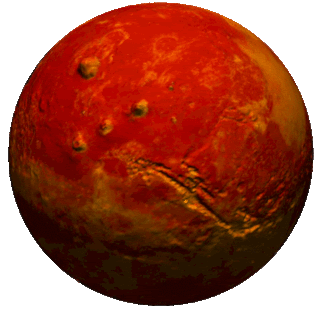Elysium Mons is a prominent shield volcano located on the expansive plains of Elysium Planitia on the planet Mars. Its distinctive characteristics and geological history provide valuable insights into the planet’s volcanic activity and the processes that have shaped its surface over epochs.
Elysium Mons stands as a significant geological feature on Mars, offering valuable insights into the planet’s volcanic and tectonic history. Its substantial presence and unique features provide a glimpse into the dynamic processes that have sculpted Mars’ surface over vast stretches of time. The study of Elysium Mons enhances our broader understanding of planetary geology, volcanic activity, and the complex forces that have shaped the terrains of celestial bodies beyond our own.
Location
Elysium Planitia, Mars
Physical Characteristics
Rising to a considerable height of approximately 12.4 miles (20 kilometers) above the surrounding Martian landscape, Elysium Mons is a substantial shield volcano. Its profile exhibits gently sloping flanks that radiate outward from its central vent, formed by successive lava flows over time. This shield-like structure is a defining feature of Martian volcanic formations.
Formation and Geological Significance
Elysium Mons owes its origin to the intricate interplay of Martian geology and volcanic processes. The volcano formed through the accumulation of lava layers resulting from successive eruptions, gradually building up its distinctive shape. Its geological history offers a glimpse into Mars’ tectonic activity, volcanic evolution, and the mechanisms that have influenced its surface over eons.
Surface Features
The surface of Elysium Mons is adorned with a diverse array of geological features resulting from its volcanic past. Extensive lava plains and intricate channels trace the path of molten rock that once flowed across its slopes. The volcano’s flanks also display evidence of collapsed lava tubes, contributing to its complex topography.
Exploration and Study
Elysium Mons has captured the attention of scientific exploration missions to Mars. Data collected from spacecraft, orbiters, and rovers have provided crucial information about the volcano’s composition, age, and volcanic history. These studies contribute to our understanding of Mars’ geological development and the role that volcanic activity has played in shaping its landscape.
